Photo










TIM ROTH as FREDDY NEWANDYKE / MR. ORANGE in RESERVOIR DOGS (1992)
1K notes
·
View notes
Text
Fantasy Guide to Architecture



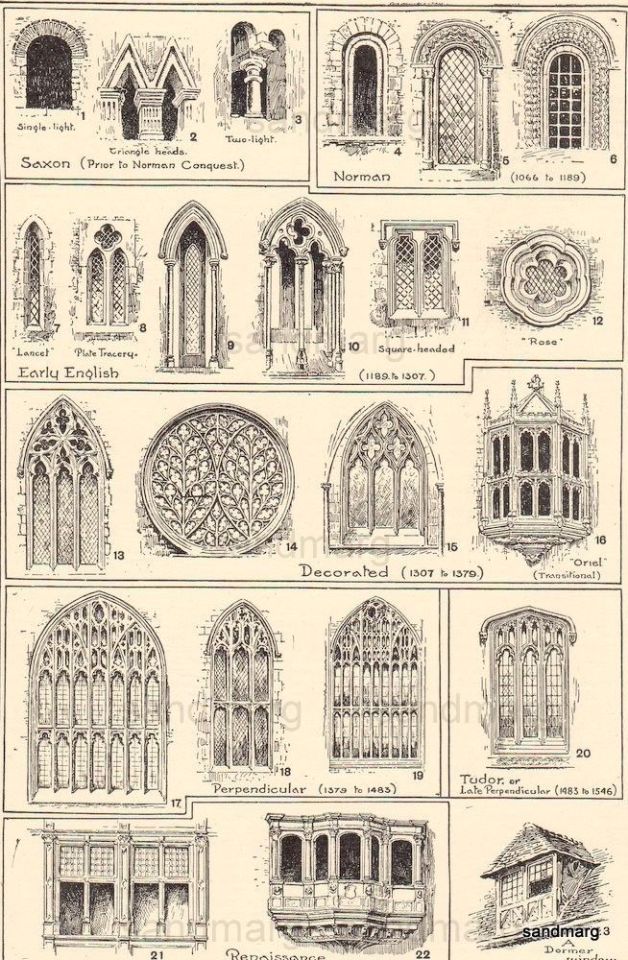


This post has been waiting on the back burner for weeks and during this time of quarantine, I have decided to tackle it. This is probably the longest post I have ever done. I is very tired and hope that I have covered everything from Ancient times to the 19th Century, that will help you guys with your worldbuilding.
Materials
What you build with can be determined by the project you intend, the terrain you build on and the availability of the material. It is one characteristic that we writers can take some some liberties with.
Granite: Granite is an stone formed of Igneous activity near a fissure of the earth or a volcano. Granites come in a wide range of colour, most commonly white, pink, or grey depending on the minerals present. Granite is hard and a durable material to build with. It can be built with without being smoothed but it looks bitchin' and shiny all polished up.
Marble: Probably everyone's go to materials for building grand palaces and temples. Marble is formed when great pressure is placed on limestone. Marble can be easily damaged over time by rain as the calcium in the rock dissolves with the chemicals found in rain. Marble comes in blue, white, green, black, white, red, gray and yellow. Marble is an expensive material to build with, highly sought after for the most important buildings. Marble is easy to carve and shape and polishes to a high gleam. Marble is found at converging plate boundaries.
Obsidian: Obsidian is probably one of the most popular stones mentioned in fantasy works. Obsidian is an igneous rock formed of lava cooling quickly on the earth's surfaces. Obsidian is a very brittle and shiny stone, easy to polish but not quite a good building material but a decorative one.
Limestone: Limestone is made of fragments of marine fossils. Limestone is one of the oldest building materials. Limestone is an easy material to shape but it is easily eroded by rain which leads most limestone monuments looking weathered.
Concrete: Concrete has been around since the Romans. Concrete is formed when aggregate (crushed limstone, gravel or granite mixed with fine dust and sand) is mixed with water. Concrete can be poured into the desired shape making it a cheap and easy building material.
Brick: Brick was one of history's most expensive materials because they took so long to make. Bricks were formed of clay, soil, sand, and lime or concrete and joined together with mortar. The facade of Hampton Court Palace is all of red brick, a statement of wealth in the times.
Glass: Glass is formed of sand heated until it hardens. Glass is an expensive material and for many years, glass could not be found in most buildings as having glass made was very expensive.
Plaster: Plaster is made from gypsum and lime mixed with water. It was used for decoration purposes and to seal walls. A little known fact, children. Castle walls were likely painted with plaster or white render on the interior.
Wattle and Daub: Wattle and daub is a building material formed of woven sticks cemented with a mixture of mud, one of the most common and popular materials throughout time.
Building terms
Arcade: An arcade is a row of arches, supported by columns.
Arch: An arch is a curved feature built to support weight often used for a window or doorway.
Mosaic: Mosaics are a design element that involves using pieces of coloured glass and fitted them together upon the floor or wall to form images.
Frescos: A design element of painting images upon wet plaster.
Buttress: A structure built to reinforce and support a wall.
Column: A column is a pillar of stone or wood built to support a ceiling. We will see more of columns later on.
Eave: Eaves are the edges of overhanging roofs built to allow eater to run off.
Vaulted Ceiling: The vaulted ceilings is a self-supporting arched ceiling, than spans over a chamber or a corridor.
Colonnade: A colonnade is a row of columns joined the entablature.
Entablature: a succession of bands laying atop the tops of columns.
Bay Window: The Bay Window is a window projecting outward from a building.
Courtyard/ Atrium/ Court: The courtyard is an open area surrounded by buildings on all sides
Dome: The dome resembles a hollow half of a sphere set atop walls as a ceiling.
Façade: the exterior side of a building
Gable: The gable is a triangular part of a roof when two intersecting roof slabs meet in the middle.
Hyphen: The hyphen is a smaller building connecting between two larger structures.
Now, let's look at some historical building styles and their characteristics of each Architectural movement.
Classical Style
The classical style of Architecture cannot be grouped into just one period. We have five: Doric (Greek), Ionic (Greek), Corinthian (Greek), Tuscan (Roman) and Composite (Mixed).
Doric: Doric is the oldest of the orders and some argue it is the simplest. The columns of this style are set close together, without bases and carved with concave curves called flutes. The capitals (the top of the column) are plain often built with a curve at the base called an echinus and are topped by a square at the apex called an abacus. The entablature is marked by frieze of vertical channels/triglyphs. In between the channels would be detail of carved marble. The Parthenon in Athens is your best example of Doric architecture.
Ionic: The Ionic style was used for smaller buildings and the interiors. The columns had twin volutes, scroll-like designs on its capital. Between these scrolls, there was a carved curve known as an egg and in this style the entablature is much narrower and the frieze is thick with carvings. The example of Ionic Architecture is the Temple to Athena Nike at the Athens Acropolis.
Corinthian: The Corinthian style has some similarities with the Ionic order, the bases, entablature and columns almost the same but the capital is more ornate its base, column, and entablature, but its capital is far more ornate, commonly carved with depictions of acanthus leaves. The style was more slender than the others on this list, used less for bearing weight but more for decoration. Corinthian style can be found along the top levels of the Colosseum in Rome.
Tuscan: The Tuscan order shares much with the Doric order, but the columns are un-fluted and smooth. The entablature is far simpler, formed without triglyphs or guttae. The columns are capped with round capitals.
Composite: This style is mixed. It features the volutes of the Ionic order and the capitals of the Corinthian order. The volutes are larger in these columns and often more ornate. The column's capital is rather plain. for the capital, with no consistent differences to that above or below the capital.
Islamic Architecture
Islamic architecture is the blanket term for the architectural styles of the buildings most associated with the eponymous faith. The style covers early Islamic times to the present day. Islamic Architecture has some influences from Mesopotamian, Roman, Byzantine, China and the Mongols.
Paradise garden: As gardens are an important symbol in Islam, they are very popular in most Islamic-style buildings. The paradise gardens are commonly symmetrical and often enclosed within walls. The most common style of garden is split into four rectangular with a pond or water feature at the very heart. Paradise gardens commonly have canals, fountains, ponds, pools and fruit trees as the presence of water and scent is essential to a paradise garden.
Sehan: The Sehan is a traditional courtyard. When built at a residence or any place not considered to be a religious site, the sehan is a private courtyard. The sehan will be full of flowering plants, water features snd likely surrounded by walls. The space offers shade, water and protection from summer heat. It was also an area where women might cast off their hijabs as the sehan was considered a private area and the hijab was not required. A sehan is also the term for a courtyard of a mosque. These courtyards would be surrounded by buildings on all sides, yet have no ceiling, leaving it open to the air. Sehans will feature a cleansing pool at the centre, set under a howz, a pavilion to protect the water. The courtyard is used for rituals but also a place of rest and gathering.
Hypostyle Hall: The Hypostyle is a hall, open to the sky and supported by columns leading to a reception hall off the main hall to the right.
Muqarnas : Muqarnas is a type of ornamentation within a dome or a half domed, sometimes called a "honeycomb", or "stalactite" vaulted ceiling. This would be cast from stone, wood, brick or stucco, used to ornament the inside of a dome or cupola. Muqarnas are used to create transitions between spaces, offering a buffer between the spaces.
African Architecture
African Architecture is a very mixed bag and more structurally different and impressive than Hollywood would have you believe. Far beyond the common depictions of primitive buildings, the African nations were among the giants of their time in architecture, no style quite the same as the last but just as breathtaking.
Somali architecture: The Somali were probably had one of Africa's most diverse and impressive architectural styles. Somali Architecture relies heavy on masonry, carving stone to shape the numerous forts, temples, mosques, royal residences, aqueducts and towers. Islamic architecture was the main inspiration for some of the details of the buildings. The Somali used sun-dried bricks, limestone and many other materials to form their impressive buildings, for example the burial monuments called taalo
Ashanti Architecture: The Ashanti style can be found in present day Ghana. The style incorporates walls of plaster formed of mud and designed with bright paint and buildings with a courtyard at the heart, not unlike another examples on this post. The Ashanti also formed their buildings of the favourite method of wattle and daub.
Afrikaner Architecture: This is probably one of the oddest architectural styles to see. Inspired by Dutch settlers (squatters), the buildings of the colony (planters/squatters) of South Africa took on a distinctive Dutch look but with an Afrikaner twist to it making it seem both familiar and strange at the same time.
Rwandan Architecture: The Rwandans commonly built of hardened clay with thatched roofs of dried grass or reeds. Mats of woven reeds carpeted the floors of royal abodes. These residences folded about a large public area known as a karubanda and were often so large that they became almost like a maze, connecting different chambers/huts of all kinds of uses be they residential or for other purposes.
Aksumite Architecture: The Aksumite was an Empire in modern day Ethiopia. The Aksumites created buildings from stone, hewn into place. One only has to look at the example of Bete Medhane Alem to see how imposing it was.
Yoruba Architecture: Yoruba Architecture was made by earth cured until it hardened enough to form into walls, or they used wattle and daub, roofed by timbers slats coated in woven grass or leaves. Each unit divided up parts of the buildings from facilities to residences, all with multiple entrances, connected together.
Igbo Architecture: The Igbo style follows some patterns of the Yoruba architecture, excepting that there are no connected walls and the spacing is not so equal. The closer a unit was to the centre, the more important inhabitants were.
Hausa architecture: Hausa Architecture was formed of monolithic walls coated in plaster. The ceilings and roof of the buildings were in the shape of small domes and early vaulted ceilings of stripped timber and laterite. Hausa Architecture features a single entrance into the building and circular walls.
Nubian Architecture: Nubia, in modern day Ethiopia, was home to the Nubians who were one of the world's most impressive architects at the beginning of the architecture world and probably would be more talked about if it weren't for the Egyptians building monuments only up the road. The Nubians were famous for building the speos, tall tower-like spires carved of stone. The Nubians used a variety of materials and skills to build, for example wattle and daub and mudbrick. The Kingdom of Kush, the people who took over the Nubian Empire was a fan of Egyptian works even if they didn't like them very much. The Kushites began building pyramid-like structures such at the sight of Gebel Barkal
Egyptian Architecture: The Egyptians were the winners of most impressive buildings for s good while. Due to the fact that Egypt was short on wood, Ancient Egyptians returned to building with limestone, granite, mudbrick, sandstone which were commonly painted with bright murals of the gods along with some helpful directions to Anubis's crib. The Egyptians are of course famous for their pyramids but lets not just sit on that bandwagon. Egyptian Architecture sported all kinds of features such as columns, piers, obelisks and carving buildings out of cliff faces as we see at Karnak. The Egyptians are cool because they mapped out their buildings in such a way to adhere to astrological movements meaning on special days if the calendar the temple or monuments were in the right place always. The Egyptians also only build residences on the east bank of the Nile River, for the opposite bank was meant for the dead. The columns of Egyptian where thicker, more bulbous and often had capitals shaped like bundles of papyrus reeds.
Chinese Architecture
Chinese Architecture is probably one of the most recognisable styles in the world. The grandness of Chinese Architecture is imposing and beautiful, as classical today as it was hundreds of years ago.
The Presence of Wood: As China is in an area where earthquakes are common, most of the buildings are were build of wood as it was easy to come across and important as the Ancient Chinese wanted a connection to nature in their homes.
Overhanging Roofs: The most famous feature of the Chinese Architectural style are the tiled roofs, set with wide eaves and upturned corners. The roofs were always tiled with ceramic to protect wood from rotting. The eaves often overhung from the building providing shade.
Symmetrical Layouts: Chinese Architecture is symmetrical. Almost every feature is in perfect balance with its other half.
Fengshui: Fengshui are philosophical principles of how to layout buildings and towns according to harmony lain out in Taoism. This ensured that the occupants in the home where kept in health, happiness, wealth and luck.
One-story: As China is troubled by earthquakes and wood is not a great material for building multi-storied buildings, most Chinese buildings only rise a single floor. Richer families might afford a second floor but the single stories compounds were the norm.
Orientation: The Ancient Chinese believed that the North Star marked out Heaven. So when building their homes and palaces, the northern section was the most important part of the house and housed the heads of the household.
Courtyards: The courtyard was the most important area for the family within the home. The courtyard or siheyuan are often built open to the sky, surrounded by verandas on each side.
Japanese Architecture
Japanese Architecture is famous for its delicacy, smooth beauty and simplistic opulence. Japanese Architecture has been one of the world's most recognisable styles, spanning thousands of years.
Wood as a Common Material: As with the Chinese, the most popular material used by the Japanese is wood. Stone and other materials were not often used because of the presence of earthquakes. Unlike Chinese Architecture, the Japanese did not paint the wood, instead leaving it bare so show the grain.
Screens and sliding doors: The shoji and fusuma are the screens and sliding doors are used in Japanese buildings to divide chambers within the house. The screens were made of light wood and thin parchment, allowing light through the house. The screens and sliding doors were heavier when they where used to shutter off outside features.
Tatami: Tatami mats are used within Japanese households to blanket the floors. They were made of rice straw and rush straw, laid down to cushion the floor.
Verandas: It is a common feature in older Japanese buildings to see a veranda along the outside of the house. Sometimes called an engawa, it acted as an outdoor corridor, often used for resting in.
Genkan: The Genkan was a sunken space between the front door and the rest of the house. This area is meant to separate the home from the outside and is where shoes are discarded before entering.
Nature: As both the Shinto and Buddhist beliefs are great influences upon architecture, there is a strong presence of nature with the architecture. Wood is used for this reason and natural light is prevalent with in the home. The orientation is meant to reflect the best view of the world.
Indian Architecture
India is an architectural goldmine. There are dozens of styles of architecture in the country, some spanning back thousands of years, influenced by other cultures making a heady stew of different styles all as beautiful and striking as the last.
Mughal Architecture: The Mughal architecture blends influences from Islamic, Persian along with native Indian. It was popular between the 16th century -18th century when India was ruled by Mughal Emperors. The Taj Mahal is the best example of this.
Indo-Saracenic Revival Architecture: Indo Saracenic Revival mixes classical Indian architecture, Indo-Islamic architecture, neo-classical and Gothic revival of the 1800s.
Cave Architecture: The cave architecture is probably one of the oldest and most impressive styles of Indian architecture. In third century BC, monks carved temples and buildings into the rock of caves.
Rock-Cut Architecture: The Rock-cut is similar to the cave style, only that the rock cut is carved from a single hunk of natural rock, shaped into buildings and sprawling temples, all carved and set with statues.
Vesara Architecture: Vesara style prevalent in medieval period in India. It is a mixture of the Dravida and the Nagara styles. The tiers of the Vesara style are shorter than the other styles.
Dravidian Architecture: The Dravidian is the southern temple architectural style. The Kovils are an example of prime Dravidian architecture. These monuments are of carved stone, set up in a step like towers like with statues of deities and other important figures adorning them.
Kalinga Architecture: The Kalinga style is the dominant style in the eastern Indian provinces. The Kalinga style is famous for architectural stipulations, iconography and connotations and heavy depictions of legends and myths.
Sikh Architecture: Sikh architecture is probably the most intricate and popular of the styles here. Sikh architecture is famous for its soft lines and details.
Romanesque (6th -11th century/12th)
Romanesque Architecture is a span between the end of Roman Empire to the Gothic style. Taking inspiration from the Roman and Byzantine Empires, the Romanesque period incorporates many of the styles.
Rounded arches: It is here that we see the last of the rounded arches famous in the classical Roman style until the Renaissance. The rounded arches are very popular in this period especially in churches and cathedrals. The rounded arches were often set alongside each other in continuous rows with columns in between.
Details: The most common details are carved floral and foliage symbols with the stonework of the Romanesque buildings. Cable mouldings or twisted rope-like carvings would have framed doorways.
Pillars: The Romanesque columns is commonly plainer than the classical columns, with ornate captials and plain bases. Most columns from this time are rather thick and plain.
Barrel Vaults: A barrel vaulted ceiling is formed when a curved ceiling or a pair of curves (in a pointed ceiling). The ceiling looks rather like half a tunnel, completely smooth and free of ribs, stone channels to strengthen the weight of the ceiling.
Arcading: An arcade is a row of arches in a continual row, supported by columns in a colonnade. Exterior arcades acted as a sheltered passage whilst inside arcades or blind arcades, are set against the wall the arches bricked, the columns and arches protruding from the wall.
Gothic Architecture (12th Century - 16th Century)
The Gothic Architectural style is probably one of the beautiful of the styles on this list and one of most recognisable. The Gothic style is a dramatic, opposing sight and one of the easiest to describe.
Pointed arch: The Gothic style incorporates pointed arches, in the windows and doorways. The arches were likely inspired by pre-Islamic architecture in the east.
Ribbed vault: The ribbed vault of the Gothic age was constructed of pointed arches. The trick with the ribbed vaulted ceiling, is that the pointed arches and channels to bear the weight of the ceiling.
Buttresses: The flying buttress is designed to support the walls. They are similar to arches and are connected to counter-supports fixed outside the walls.
Stained-Glass Window: This is probably one of the most recognisable and beautiful of the Gothic features. They can be set in round rose windows or in the pointed arches.
Renaissance Architecture (15th Century- 17th Century)
Renaissance architecture was inspired by Ancient Roman and Greek Architecture. Renaissance Architecture is Classical on steroids but has its own flare. The Renaissance was a time for colour and grandeur.
Columns and pilasters: Roman and Greek columns were probably the greatest remix of the Renaissance period. The architecture of this period incorporated the five orders of columns are used: Tuscan, Doric, Ionic, Corinthian and Composite. The columns were used to hold up a structure, support ceilings and adorn facades. Pilasters were columns within a chamber, lining the walls for pure decoration purposes.
Arches: Arches are rounded in this period, having a more natural semi-circular shape at its apex. Arches were a favourite feature of the style, used in windows, arcades or atop columns.
Cupola: Is a small dome-like tower atop a bigger dome or a rooftop meant to allow light and air into the chamber beneath.
Vaulted Ceiling/Barrel Vault: Renaissance vaulted ceilings do not have ribs. Instead they are semi-circular in shape, resting upon a square plain rather than the Gothic preference of rectangular. The barrel vault held by its own weight and would likely be coated in plaster and painted.
Domes: The dome is the architectural feature of the Renaissance. The ceiling curves inwards as it rises, forming a bowl like shape over the chamber below. The dome's revival can be attributed to Brunelleschi and the Herculean feat of placing a dome on the Basilica di Santa Maria del Fiore. The idea was later copied by Bramante who built St. Peter's Basilica.
Frescos: To decorate the insides of Renaissance buildings, frescos (the art of applying wet paint to plaster as it dries) were used to coat the walls and ceilings of the buildings. The finest frescos belong to Michelangelo in the Sistine Chapel.
Baroque (1625–1750)
Baroque incorporates some key features of Renaissance architecture, such as those nice columns and domes we saw earlier on. But Baroque takes that to the next level. Everything is higher, bigger, shinier, brighter and more opulent. Some key features of Baroque palaces and buildings would be:
Domes: These domes were a common feature, left over from the Renaissance period. Why throw out a perfectly good bubble roof, I ask you? But Baroque domes were of course, grander. Their interiors were were nearly always painted or gilded, so it drew the eye upwards which is basically the entire trick with Baroque buildings. Domes were not always round in this building style and Eastern European buildings in Poland and Ukraine for example sport pear-shaped domes.
Solomonic columns: Though the idea of columns have been about for years but the solomonic columns but their own twist on it. These columns spiral from beginning to end, often in a s-curved pattern.
Quadratura: Quadratura was the practice of painting the ceilings and walls of a Baroque building with trompe-l'oeil. Most real life versions of this depict angels and gods in the nude. Again this is to draw the eye up.
Mirrors: Mirrors came into popularity during this period as they were a cool way to create depth and light in a chamber. When windows faced the mirrors on the wall, it creates natural light and generally looks bitchin'. Your famous example is the Hall of Mirrors at the Palace of Versailles.
Grand stairways: The grand sweeping staircases became popular in this era, often acting as the centre piece in a hall. The Baroque staircase would be large and opulent, meant for ceremonies and to smoother guests in grandeur.
Cartouche: The cartouche is a design that is created to add some 3D effect to the wall, usually oval in shape with a convex surface and edged with scrollwork. It is used commonly to outline mirrors on the wall or crest doorways just to give a little extra opulence.
Neoclassical (1750s-19th century)
The Neoclassical Period involved grand buildings inspired by the Greek orders, the most popular being the Doric. The main features of Neoclassical architecture involve the simple geometric lines, columns, smooth walls, detailing and flat planed surfaces. The bas-reliefs of the Neoclassical style are smoother and set within tablets, panels and friezes. St. Petersburg is famous for the Neoclassical styles brought in under the reign of Catherine the Great.
Greek Revival (late 18th and early 19th century)
As travel to other nations became easier in this time period, they became to get really into the Ancient Greek aesthetic. During this architectural movement they brought back the gabled roof, the columns and the entablature. The Greek Revival was more prevalent in the US after the Civil War and in Northern Europe.
Hope this helps somewhat @marril96
27K notes
·
View notes
Text
eras tour + bracelets
hey everyone - I'm going to be at the eras tour in the UK on Friday 21st - is anyone in section 501 trading bracelets??? :)
2 notes
·
View notes
Text
Reblog if you think trans women:
A. Are women
B. Can be lesbians
191K notes
·
View notes
Text
Fantasy Guide to the Debutante Ball

In recent years due to the rise of Bridgerton, the concept of a debutant has piqued a lot of your interests. I've been answering a lot of questions about debuts so I've decided to compile everything into one guide for you all (y'all deserve a guide because I've not made many in ages cause I've been absolutely swamped. I'm going to try do more).
What exactly is a debut?
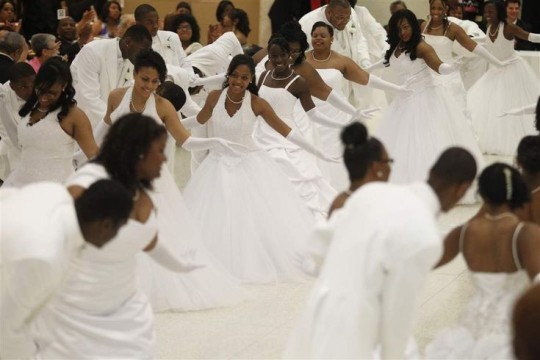
A debut is the entrance of a member of the nobility, the gentry or the wealthy into the society of the day. They are being formally introduced to their peers and their future social groups. This milestone marks them coming of age and being able to finally take part in society as adults. Both boys and girls make their debut in society. But we will be focusing on the girls for today.
How to Debut in Polite Society
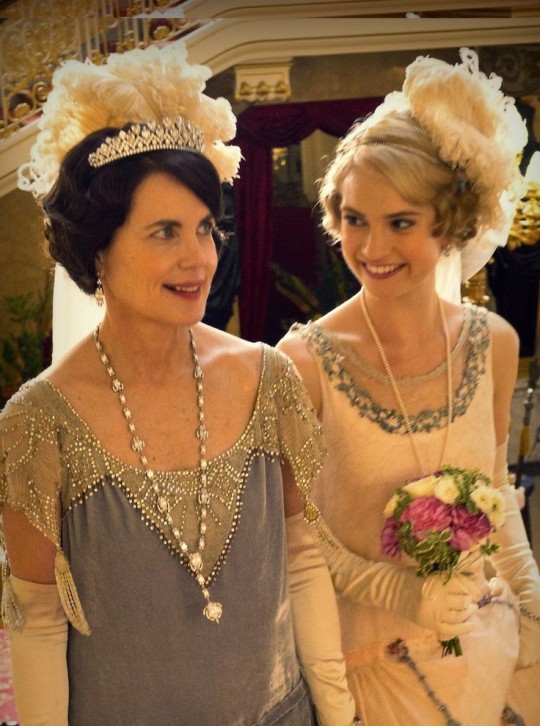
Like many traditions, there are strict guidelines one must follow. Most debutants are at least 16, ranging to 16-20. They must be a member of nobility, gentry or a part of an influential family in order to participate.
In European tradition, the debutant is introduced to the Royal family by a female relative, who has already been presented at court. They are formally introduced to the court and society, making their bows or curtsys. Once this ritual has been observed, every debutant will hold a ball at their own home to celebrate their coming out. Every debutant will host a ball and attend other debutants' balls over the weeks of the Season. They would also attend different events throughout the Season in order to meet their peers and make connections. The tradition of the debutant ball has become a rarity in recent years though some still practise it.
In 19th Century America, one debut's by holding a ball to mark one's entrance into society. Peers, influential figures and other affluential people would be invited to witness the debutant make their entrance. In more recent years, a debut is made through International Debutante Ball. A debutante must be recommended by an established member of society or a member of the committee (usually a female relative) similar to the European tradition. However, in American tradition the debutants are escorted by her father rather than a female relative and once she's presented, she is escorted by a younger male escort. The American debutant does not get away without her curtsy however, she must perform the gesture known as the St. James Bow to attendees or in Southern tradition, the "Texas Dip".
What to wear to a Debut

Everything, even down to what you're wearing, is set out in tradition. When debuting at a European Court, the traditional choice is a white court dress (though soft pinks and shades of white are permitted). The dress was short sleeved and had to have a train. The debutante wore long white gloves, a veil in her hair with three white ostrich feathers and jewels. Before the debutant has been introduced, she would hold her train over her arm and then let it fall when she has been presented. American debutants have a more complex colour scheme since they can participate in the ball for up to three years first time debutants wear wear white, post-debutantes black and on the third year they wear red.
I also really recommend watching Downton Abbey 4x09 because of how accurately it depicts the debutante's journey from before ceremony, the actual ceremony and post-ceremony.
557 notes
·
View notes
Text
STUNNING

i am the devil, but that’s all the same to me
531 notes
·
View notes
Text
Who wins best supporting/side character?
Ooh, this is difficult. There’s so many amazing side characters out of my OCs but I’ll probably give it to Naomi. She’s lovely, kind and tries to be a good person unlike the rest of the trash, awful people!
Whiniest bitch?
This is actually really easy to answer. It has to go to Marianna, because she always acts her life is so much worse than everyone else when she’s got the easiest life imaginable in the horrible world I’ve created.
Dealing With Trauma Unhealthily Award
Will, 100%. When his mother dies, he spends three years plotting her ex-boyfriend’s violent end only to achieve it by killing a bunch of sailors as well. Not to mention brutally hurting anyone that hurts Jonathan. (because he loves him.)
Lost a Parent The Youngest
This is both Ben and Jonathan, because they’re twins. But Jonathan got sent through the foster care system and Ben got snatched by his aunt and trained as a human weapon, so they have a bit more trauma than dead parents.
OC Magazine’s Sexiest Man (or character) Alive
Jonathan. It’s so obviously Jonathan. This man pulls everyone he wants to, is gorgeous, charming. Every scene he’s in I end up giggling. Also, Layla. She’s so beautiful... and mean.
Who wins Best Fight Sequence?
This award goes to when Ben and Layla fight over who gets to kill a side character, Anna. Not only are they canonically two of the best fighters, but also it’s in a ballroom. So, there’s that.
Who wins Outstanding Plot Fucker Upper?
Prim, Naomi and Ben. All three of them are messy. When Prim tells Naomi and Ben that she killed Edward, it just ruins any chance of trying to restore the peace. The whole plot goes out the window.
Best Monologue?
Melody has this speech to Prim about how much she loves her but she’ll never forgive her for killing Edward. Firstly, it’s such a distinctly feminist speech but also Melody’s just AMAZING.
Best Kiss?
I have so many contenders for this award. I’m just going to list them all with (very) brief reasoning.
Will and Jonathan’s first kiss when Will’s bleeding and holding him like he’s water in his hands.
Marianna and Jonathan’s last kiss before she tries to head off into her new life.
Ben and Naomi - any kiss by them, but particularly the one where Naomi finds out everything.
Layla and Jack are the most ridiculously attractive couple and they have so much sexual tension that when they do kiss, it’s SO WORTH IT.
Most Sympathetic Villain?
Somehow, Will. Not because he’s actually sympathetic but because every other villain is so awful in comparison that he seems like a nice, considerate person. He’s also got a great inner monologue.
Best Playlist?
Melody has just this amazing combination of Mitski, FKA Twigs and Taylor Swift that I just eat up every single time.
Add your own category (Favourite line said by an OC)
“I know that love burns because of you. Aching fire in the back of my throat every time you open your mouth. I am your ashes, Will. I am your fire.” This is Jonathan and I love it.
@athenswrites
✨️OC Awards Nominations Asks✨️
Who wins best supporting/side character?
Whiniest bitch?
Dealing With Trauma Unhealthily Award
Lost a Parent The Youngest
OC Magazine’s Sexiest Man Alive
Who wins Best Fight Sequence?
Who wins Outstanding Plot Fucker Upper?
Best Monologue?
Most Tragic On Screen/Offscreen Death?
Best Kiss?
Most Sympathetic Villain?
Best Costume Design
Best Playlist?
Add your own category
567 notes
·
View notes
Text
#forcertainfanficwriters #youknowwhatkindimean
Avoiding Writing Toxic Relationships
- My biggest problem with YA is the glorification of toxic relationships. Especially since it is targeted at a younger group of people who often idolize said relationships. So here’s a guide for determining if your MC’s love interest is toxic, or just a normal flawed person.
FIGHTING
- To make a realistic relationship, your MC and their love interest are going to fight. They are (most likely) young and in a high stress situation. It would be completely realistic for them to fight. However, too often in YA, these fights are taken past an unforgivable line. Physical violence is where the line in crossed. They should not push, slap, kick, their partner. If it is lover’s to enemies, this is okay when they are enemies, as long as it stops once they’re in a relationship.
- This goes for girl love interests as well. I’ve seen countless books have the girl slap or kick her male love interest after a small mistake or to show she’s angry at him. Authors do it to show that she’s a “strong female character”. Don’t do that. It’s not something cute. When I was twelve and began reading The Mortal Instruments, I got to the scene where Clary slapped Jace and was confused about whether or not they were really supposed to be interested in each other. (There are several things with their entire relationship. It really is just toxic. I had to stop reading after the second book the first time around.)
- Have your characters be in the wrong! It doesn’t make them toxic, it makes them human and relatable. Have them snap at their love interests over hurt feelings or in a stressful situation. But have them apologize and do better. Not only does it help show the audience that they have a healthy relationship, it shows character development. A character should not be the same as they were at the beginning of the book. They need to learn something. This is a good place to start if you are at a loss.
CONSENT
- What else makes YA couples toxic besides fighting? Consent. I’ve had to stop reading many YA books, because I was so put off by a lack of consent. I’ve seen authors frame forced kisses as romantic, even when the main protagonist was initially mad about it. (Sarah J. Maas books.) I’ve seen characters admit to s*xual assault and and it is framed as romantic because it’s framed as one character pining after the other. There always has to be consult. Characters don’t have to ask for everything, especially if they have an understanding with each other. Forcing things is different. Two best friends, or lovers, who don’t ask to hold hands, lay on top of each other, kiss, etc. (especially if it is common in their relationship) is completely different then knowing someone doesn’t like you and forcing yourself on them or admitting to them you don’t care about their boundaries.
TOXIC RELATIONSHIPS
- Have toxic relationships in your stories. Condemn them and show they are bad. Show red flags for young audiences and warn them to stay away from similar people. Have your character grow and over come people who don’t really care about them. Don’t use “he/she had a troubled past and has trauma. Now their a badboy/girl in need of love” to excuse their toxic or controlling behavior.
1K notes
·
View notes
Text
Writer's Guide: Writing about Alcoholic Drinks and Cocktails

Or how to write believable bar and nightclub scenes. I often find myself helping friends with their WIPs and often it as a bartender, I find myself having to correct them on bar and mixology terminology. So here's my quick guide to keeping your lingo on the straight and narrow.
Terminology

DASH/SPLASH: a drop of a mixer such as juice or flavouring.
MIXER: non alcholic beveraged served with the measure of alcohol in the same glass.
NEAT: Plain, without any addition of ice or a mixture. Just the alcohol.
ON THE ROCKS: Served over Ice.
STRAIGHT UP: The cocktail is chilled with ice and strained into a glass with no ice
DIRTY – if somebody asks for a dirty martini, you add olive juice, the more juice the dirtier it is
DRY- A dry martini includes a drop of vermouth and an extra dry martini contains a drop of scotch swirled in the glass and drained before adding the gin
BACK – a ‘back’ is a drink that accompanies an alcholic beverage such as water or Coke, but isn't mixed.
GARNISH – something added to a drink such as a lime or lemon or orange.
TWIST - a twist is literally a twist of fruit skin in the drink.
BITTERS – a herbal alcoholic blend added to cocktails.
RIMMED - the glass is coated in salt or sugar to enhance the taste.
VIRGIN- non alcoholic
MOCKTAIL- a virgin cocktail
DOUBLE - Two measures of the same alcohol in the same glass. A bartender can only legally serve a double in the same glass. They cannot serve you a triple.
Equipment

COCKTAIL SHAKER - it is a metal cup that fits into a glass, used to shake the components of your drink together with ice to chill it.
STRAINER- used to seperate ice in the shaker from the liquid within as you pour it into the glass.
MEASURES- these are little metal cylinders meant to measure out the pours of the alcohol. You pour the alcohol from the bottle into the measure and then put it into the glass. It's imperative that the right measure goes into the glass or the drink will taste of shit.
BAR SPOON – a long spoon meant to mix the drink.
OPTIC- it is a mechanism that attaches a bottle to an automatic pourer. The bartender usually fits the glass under the spout and pushes up to release the amount which cuts off at the single measure.
SHOT GLASS- a shot glass is a small glass to contain one measure
PINT GLASS- a glass used for serving pints of lager or ale
HALF PINT GLASS - a tulip shaped glass half the measure of a pint glass
SPEEDWELL/TAPS/DRAFT: are the taps used to pour beer from kegs stored under the bar floor.
SLIM JIM/HIGH BALL GLASS- It is a tall straight holding 8 to 12 ounces and used for cocktails served on the rocks such as a Gin and Tonic.
ROCKS GLASS - or an old fashioned glass, it is short and round. These glasses are used for drinks such as Old Fashioneds or Sazerac
COUPE GLASS- Are broad round stemmed glasses used for cocktails that are chill and served without ice such as a Manhattan, Boulevardier or a Gimlet
MARTINI GLASS - a martini glass is that classic stemmed "v" shaped glass, used to serve drinks without mixers such as Martini and Cosmopolitans
MARGARITA GLASS - is a large, round bowl like glass with a broad and a tall stem used for Margaritas and Daiquiris
HURRICANE GLASS- a tall tulip-like shaped glass with a flared rim and short stem. It holds 20 ounces which means it is the perfect glass to serve iced cocktails in such as Pina Colada, Singapore Sling, Hurricane
Alcoholic Drinks

Vodka- Vodka is made from potatoes or fermented cereal grains. It has a strong taste and scent. It is usually consumed neat with a mixer such as Coke or Orange juice or cranberry juice or in cocktails like Martini, Bloody Mary and Cosmopolitan.
Whisky/Whiskey- Whiskey is a distilled alcoholic beverage, made from fermented grain mash such as barley, corn, rye, and wheat. It gets its flavour form being fermented in casks for long period of time. When serving a whiskey, one asks whether they want ice or a mixer. Everyone has their own preference. I prefer mine like myself, strong and Irish. Scotch is Scottish Brewed whisky.
Rum- Rum is made by fermenting and distilling sugarcane molasses/juice. It is aged in oak barrels. It has a sweet taste.
Beer: is made out of cereal grains and served chilled in bottles or pulled from taps/speedwells.
Ale: Ale in the middle ages referred to beer brewed without hops (a kind of flowering plant that gives beer its bitter taste). It is sweeter and would typically have a fruity aftertaste.
Stout- is a darker beer sometimes brewed from roasted malt, coming in a sweet version and dry version, the most famous stout being Guinness.
Poitín- (pronounced as pot-cheen) is made from cereals, grain, whey, sugar beet, molasses and potatoes. It is a Dangerous Drink (honestly i still don't know how I ended up in that field with a traffic cone and a Shetland pony) and technically illegal. Country folk in Ireland used to brew it in secrets in stills hidden on their land.
Vermouth: Is made from infused with roots, barks, flowers, seeds, herbs, spices, brandy but vermouth is classed aromatized wine. It comes sweet or dry
Gin- is made from juniper, coriander, citrus peel, cinnamon, almond or liquorice and grain alcohol. Gin has a strong scent and taste and is usually served in a martini or a tonic water.
Schnapps- refers to any strong, clear alcoholic beverage. It is considered one of the best types of spirits because of its pure and delicate aroma. Lesson: never drink peach schnapps.
Cocktails and Drinks

Irish Coffee: an Irish coffee is adding whiskey to coffee and sugar and topping it with cream. As a bartender, I would honestly rather cut my arm off than make one of these.
Baby Guinness: Is a shot made by pouting Tia Maria or Kaluah into a shot glass and spreading Baileys on the top so it looks like a small pint of Guinness.
Silver Bullet: a shot of mixed tequila and sambuca.
Long Island Iced Tea: The Long Island contains vodka, gin, tequila, light rum, lemon juice, triple sec and cola. It has a real kick.
Mai Tai: is made with light and dark rum, lime juice, orange curacao, orgeat syrup and rock candy syrup and served with a mint garnish.
Manhattan: The Manhattan is made with rye whiskey, sweet vermouth and bitters.
Margarita: The margarita is made with tequila, cointreau and lime juice.
Mojito: a mojito is made with muddled mint, white rum, lime juice, simple syrup and soda.
Martini: a martini is made of gin, dry vermouth and garnished with a lemon twist or olives.
Mimosa: a mimosa is a made with sparkling wine and orange juice.
Mint Julep: Made with Kentucky bourbon, simple syrup, mint leaves and crushed ice
Pina Colada: is made with white rum, dark rum, pineapple juice and coconut cream
Screwdriver: Vodka and Orange juice
Tequila Sunrise: tequila, orange juice and grenadine
Tom Collins: made with spiked lemonade, sparkling water, lemon juice, simple syrup and gin
Whiskey Sour: is made with powdered sugar, seltzer, lemon juice and whiskey.
White Russian: made with vodka, coffee liqueur and cream.
Black Russian: made with two parts coffee liqueur and five parts vodka.
Gin and Tonic: gin served with tonic water
Bloody Mary: made with vodka and tomato juice mixed with lemon juice, hot sauce, Worcestershire sauce, horseradish, fresh herbs, brown sugar and cracked black pepper.
Brandy Alexander: served straight up and made with brandy, cognac, creme de cacao and cream
Cosmopolitan: Made with citrus vodka, Cointreau, cranberry juice and fresh lime juice
Daiquiri: made with rum, lime juice and sugar.
Gimlet: gin and lime juice
My Top 10 Bartending Rules and Responsibilities
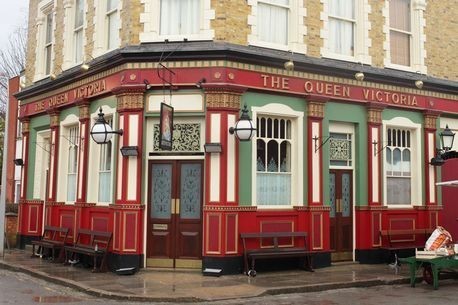
Overpouring is never an option. You can seriously hurt somebody by overpouring, not to mention spoil the drink and ruin your sales. You only serve people what they ask and never more.
When somebody has had enough, you stop serving them. After a while, you know when to cut somebody off.
Never leave bottles on the counter or in reach of customers. Your expensive spirits should never be in reach of anybody but you.
If you tell somebody your selling them premium and top shelf alcohol, you cannot substitute with cheaper licqor. It's illegal.
As a bartender, your eyes always have to be scanning a crowd. You can't leave people hanging.
The golden rule - if you see somebody messing with someone's drink, you chuck it if you can or warn the person. And you get that son of a bitch out of your pub.
50% of the job is cleaning. You have to clean your tools constantly. You cannot reuse measures and spouts, you have to wash everything. Beer traps are clean out every night, rubber mats are washed and anything you have used has to be clean.
You have to hand dry your glasses. You never polish a pint glass as it fucks up the pint. You polish your cocktail glasses, shot glasses and straight glasses.
If someone seems down or on their own, you try make conversation. Often you'll hear some disturbing stuff but always try lend an ear or make everyone feel included.
If you break a glass in the ice bucket, you got to get rid of the ice.
30K notes
·
View notes
Text
“Extremely detailed character sheet template”
Character Chart
Character’s full name:
Reason or meaning of name:
Character’s nickname:
Reason for nickname:
Birth date:
Physical appearance
Age:
How old does he/she appear:
Weight:
Height:
Body build:
Shape of face:
Eye color:
Glasses or contacts:
Skin tone:
Distinguishing marks:
Predominant features:
Hair color:
Type of hair:
Hairstyle:
Voice:
Overall attractiveness:
Physical disabilities:
Usual fashion of dress:
Favorite outfit:
Jewelry or accessories:
Personality
Good personality traits:
Bad personality traits:
Mood character is most often in:
Sense of humor:
Character’s greatest joy in life:
Character’s greatest fear:
Why?
What single event would most throw this character’s life into complete turmoil?
Character is most at ease when:
Most ill at ease when:
Enraged when:
Depressed or sad when:
Priorities:
Life philosophy:
If granted one wish, it would be:
Why?
Character’s soft spot:
Is this soft spot obvious to others?
Greatest strength:
Greatest vulnerability or weakness:
Biggest regret:
Minor regret:
Biggest accomplishment:
Minor accomplishment:
Past failures he/she would be embarrassed to have people know about:
Why?
Character’s darkest secret:
Does anyone else know?
Goals
Drives and motivations:
Immediate goals:
Long term goals:
How the character plans to accomplish these goals:
How other characters will be affected:
Past
Hometown:
Type of childhood:
Pets:
First memory:
Most important childhood memory:
Why:
Childhood hero:
Dream job:
Education:
Religion:
Finances:
Present
Current location:
Currently living with:
Pets:
Religion:
Occupation:
Finances:
Family
Mother:
Relationship with her:
Father:
Relationship with him:
Siblings:
Relationship with them:
Spouse:
Relationship with him/her:
Children:
Relationship with them:
Other important family members:
Favorites
Color:
Least favorite color:
Music:
Food:
Literature:
Form of entertainment:
Expressions:
Mode of transportation:
Most prized possession:
Habits
Hobbies:
Plays a musical instrument?
Plays a sport?
How he/she would spend a rainy day:
Spending habits:
Smokes:
Drinks:
Other drugs:
What does he/she do too much of?
What does he/she do too little of?
Extremely skilled at:
Extremely unskilled at:
Nervous tics:
Usual body posture:
Mannerisms:
Peculiarities:
Traits
Optimist or pessimist?
Introvert or extrovert?
Daredevil or cautious?
Logical or emotional?
Disorderly and messy or methodical and neat?
Prefers working or relaxing?
Confident or unsure of himself/herself?
Animal lover?
Self-perception
How he/she feels about himself/herself:
One word the character would use to describe self:
One paragraph description of how the character would describe self:
What does the character consider his/her best personality trait?
What does the character consider his/her worst personality trait?
What does the character consider his/her best physical characteristic?
What does the character consider his/her worst physical characteristic?
How does the character think others perceive him/her:
What would the character most like to change about himself/herself:
Relationships with others
Opinion of other people in general:
Does the character hide his/her true opinions and emotions from others?
Person character most hates:
Best friend(s):
Love interest(s):
Person character goes to for advice:
Person character feels responsible for or takes care of:
Person character feels shy or awkward around:
Person character openly admires:
Person character secretly admires:
Most important person in character’s life before story starts:
After story starts:
found here
114K notes
·
View notes
Text
Fantasy Guide to Arranging Marriages
Marriages in fantasy, just like in history usually are dynastic and political moves that could make or break the future of the people getting married. As the writer, it is up to you to decide whether who marries who within your kingdom.

Match-up Map
One thing I found to match this process easier, is to make a list of the noble families in my kingdom or abroad including royals. List ages, gender and names of those unmarried in your kingdom. Make sure you plan with a meticulous plan before writing present weddings. Go back and see which lords married who and who has married the king, princes or princesses before the story begins as it can help with forming the political structure of your world.
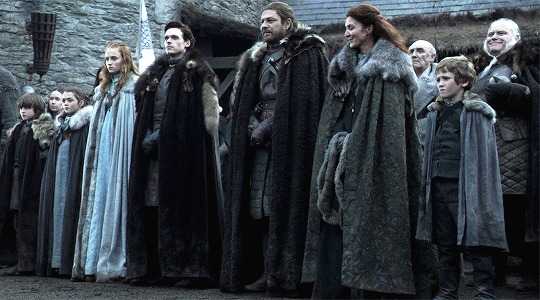
Is it desire? No, business
Weddings are made for cementing alliances within kingdoms or with abroad. Each family wants something from the other they marry into, whether it be an heir, wealth or power. Let’s look at some examples
Margaret Beaufort, cousin and heir to the House of Lancaster, was married to Edmund Tudor, half brother of the king, in an effort to sire an heir. They were successful and Henry Tudor was born, becoming Henry VII after taking the throne of Richard III.
In Shakespeare in Love, Viola is married to Lord Wessex, only because she is rich and his family is impoverished. He is a gold digger basically.
Henry VII of England married Elizabeth of York to cement his power. A clever move as his claim on the throne was tremulous at best and could be easily waved off. Married to the eldest living child of the penultimate king, Edward IV, he boosted his power, merging York and Lancaster together.

All is fair in weddings and war
Wartime is a good time for marriages to be performed. The factions will strengthen their bonds by marriage. If one king fights another, he may turn to a third for aid offering to wed his son to a daughter of that king. This would unit them in the effort to win the war and remain friends afterwards.
During the Wars of the Roses, Isabel Neville, daughter to Warwick the Kingmaker, was married to the king’s brother George of Clarence in her father’s effort to dethrone Edward IV, a king he had already made, and crown George, making Isabel the Queen. This plot failed.
The Kingmaker would try a second time, this time marrying his daughter Anne to Edward of Westminster, the Lancastrian Prince of Wales who was the rival and enemy of York. This wedding bond two old enemies together and together they aimed to take the throne. It failed. Guess Warwick’s first king was made a little too well.

We’re all in this together, just on opposite sides tho
If a family has more than one heir, bank on the fact that they will marry into multiple other families. One sister could marry into a family and her brother could marry a bride from the rivals of that family. If all comes to all, the siblings could be going to war with one another. This can create a wealth of bad blood and fear between a family not to mention tear a kingdom apart.

Step by Step, get to that altar
So you have your list of eligible bachelors and desired brides. Now it is time to decide where we are going with them. There are 3 steps in the arranged marriage process. Talks, betrothal, wedding.
Talks is when the heads of the two factions meet to discuss the marriage. They could argue about dowries and lands or when to wed their heirs. This can be a drawn out process mind so just because they are talking about marriages in the first chapter don’t expect the wedding to happen soon depending on the delicacy of the marriage or the temperament of your families.
The betrothal is the engagement period. Once betrothed you are considered to be almost married up to actual ceremony. This period can last years or months depending on age or events that are happening. It can be broken off at any time due to a breakdown in alliances or death of a participant.
Wedding is when the deal is sealed. You need to, ahem, make things official in the bedroom before it is considered binding. Marriages can be put aside due to lack of consummation.

1K notes
·
View notes
Text
#ihonestlywould #i read it in an hour and a half #i’m not afraid
honestly I wouldn’t read les mis again, not even for all of Jeff Bezos’ money
26 notes
·
View notes
Text

cameron mackintosh' rights to shut the fuck up
Sorry for the messy coloring, just had to get this out there
1K notes
·
View notes
Text



Quotes : Jonathan Safran Foer // Albert Camus // Donna Tartt // Donna Tartt // Friedrich Nietzsche // Edgar Allen Poe // Rainer Maria Rilke //
Art: 2. Adrian Ghenie // 4. Heinrich Gogarten // 5. Henrik Aa. Uldalen // 7. Michel Voogt // 8. Erika Seguín Colás // 9. Yanjun Cheng // 13. Henrik Aa. Uldalen // 14. Chris Veeneman // 17. Henrik Aa. Uldalen // 18. Maurice Sapiro
7K notes
·
View notes
Text
grantaire is bo burnham in a different font
53 notes
·
View notes
Text
Fantasy Wardrobe: Gowns
Skirts, ball gowns and chitons. Fantasy fashion is seen more often on women than the men so we focus on their clothes more. Sorry for this bible of a post.
Under the gown

Stop that dirty mind. These are the structures that hold out the gown to keep it the shape desired.
Farthingale/verdugado: were a series of hoops stitched into a sheath of material. This was worn under the gown in order to plump it out.
Pannier: Unlike to the farthingale, these were set at the hips rather than all around the body. These were popular in the 17th and 18th centuries. They extended the width of the skirt keeping the front and back panels flat.
Crinoline: This is a structured petticoat made to plump out a skirt of a gown popular in Victorian times. They were popular at the mid-19th century.
Petticoat: This is an underskirt worn under a skirt or a dress. Modern ones are made of layer after layer of tulle or netting.
Chemise/shift: A long underdress made of light material worn under the corset, kirtle and gown.
Top of the gown
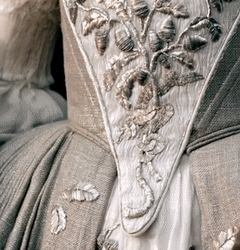
This portion of the gown covers from the shoulders to the hips/waist.
Bodice: This part is the where the gown covers area from the neck to the waist.
Halter Neck: The halter neck’s straps go up the shoulders and are fastened at the neck, exposing the shoulders and having a plunging neckline.
Plunging Neck: The neckline makes a V from the neck/shoulders in the direction of the navel.
Empire Line: This style was popular in the Napoleonic courts. The bodice ends below the bust line and here the skirt begins flowing.
Boat neckline: This neckline runs from one shoulder to the other like Meghan Markle’s wedding gown.
Sweetheart: This makes a loveheart shape over the bust.
Scooped: a round neckline
Square: a square neckline
Sheer: When a see-through piece of material is sewn over the top of the gown.
Sleeves

The sleeves of the gown are just as important as the rest of it. Again variations lead to a wider sense of imagination.
Cold Shoulder: The sleeves begins at the top of the shoulder while the rest drapes behind, allowing the arm to be seen through it. Also called Angel sleeve.
Batwing sleeve: This sleeve has a deeper area for the arm and tapers thinner toward the wrist. Also called a magyar.
Bell sleeve: The sleeve runs down the shoulder and flares out from the elbow
Bishop sleeve : This sleeve is loose from the arm but tight at the cuff.
Cap sleeve: This only covers the top of the shoulder.
Fitted point sleeve: The sleeve tapers tp the back of the back in a point.
Gigotor: This sleeve is wide at the upper part of the arm but narrows at the elbow and wrist.
Hanging sleeve: This sleeve that slits at the side or front or the elbow, allowing the arm to peak out. Popular in mediaeval times.
Juliet sleeve : This sleeve has a puff at the top and runs down the arm or leaves it bare. See Snow White.
Lantern sleeve: The top of the sleeve runs straight and then puffs out between wrist and elbow
Poet sleeve: This long sleeve is fitted tight at the shoulder to elbow flares at the elbow and wrist.
Wizard’s sleeve: This sleeve runs from shoulder to wrist opening there and draping toward the floor with points.
Skirts
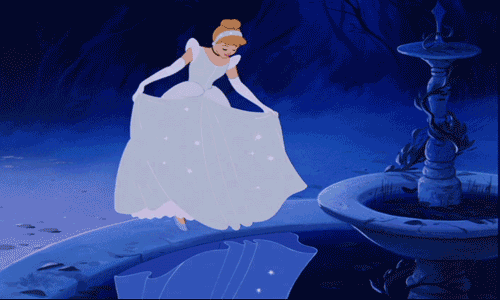
The shapes of the skirt vary. Try different shapes with your world to give a feeling of variety and depth.
A-line: This skirt flares out from the bodice with a gentle slope almost like the letter A.
Ballgown: This skirt stretches from the bodice in a wide shape. Think of the massive gowns on Big Fat Gypsy Wedding.
Bell Jar: Similar to the ballgown only the hem slightly goes in making it look like a bell.
Drop Waist Silhouette: This skirt begins below the hips from a loose seam. Most popular in 1920s.
Mermaid Silhouette: The gown is tight and fitting from the neck down to the knees of shins where is flares out like a fish’s tale.
Trumpet Silhouette: The skirt flares out from the mid thigh region.
High-Low skirt: the skirt is short at the front and long in the back. The mullet of gowns if you will.
Train: This is a sweep of material that trails behind the lady as she walks.
Examples of interesting historical gowns.

Sack-back gown or robe à la française: Popular in the 18th century. This style has the fabric gathered and streaming from the shoulders like a cape. The gown is open at the front to show the stomacher and petticoat. Here panniers will be worn, the wider the richer the lady. This gown often had ¾ length sleeves.
Robe à la polonaise: This is a gown with a skirt that is cutaway, draped and ruffled at the overskirt. It can also be fitted.
Robe à l'anglaise: Similar to the francaise, the back of the gown was pleated into a cape like train. The gown was open in front to show the petticoat and the sleeves reached the elbows.
Tudor Style: This gown has a square neckline which may or may not include a sheer. The sleeves an be fitted to elbow and then billow out, lined with fur or are fitted at the elbow and wrist, showing the chemise underneath.
Chiton: This dress is often seen in Roman or Greek art. The Doric version was made by draping material over the body and fastened at the shoulder by clasps The Ionic chiton version was draped about the body and pinned at the waist.
Civil War Gown: These gowns featured drop shoulder sleeves, had low necklines, and ridiculously voluminous skirts. All this had to have petticoats and crinoline to keep the shape.
Tea gown: These gowns were seen in 19th century clothes. They had little form or structure and were often made of light fabrics.
Russian court dress: This gown consisted of robes worn over a tablier, with a boat neckline and cold shoulder sleeves.
7K notes
·
View notes
